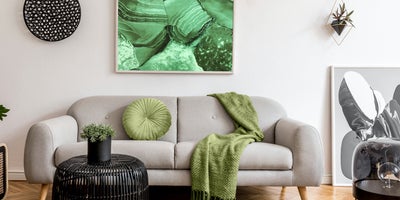When it comes to accessorising and adding decorative flourishes, minimalist artwork looks right at home in contemporary spaces. It’s an emerging trend in contemporary interior design, and can be an effective way to create a unique atmosphere. The goal of minimalism is to reduce and simplify elements down to the most essential parts, allowing them to be more impactful. This type of artwork offers a modern and minimalist aesthetic to a space, while also creating a striking visual statement. You’ll often see it in the form of abstract shapes and so it must be carefully chosen to match the overall design style of the room. Some paper, leftover board or a canvas, and some spare wall paints are all you need to create your own.

